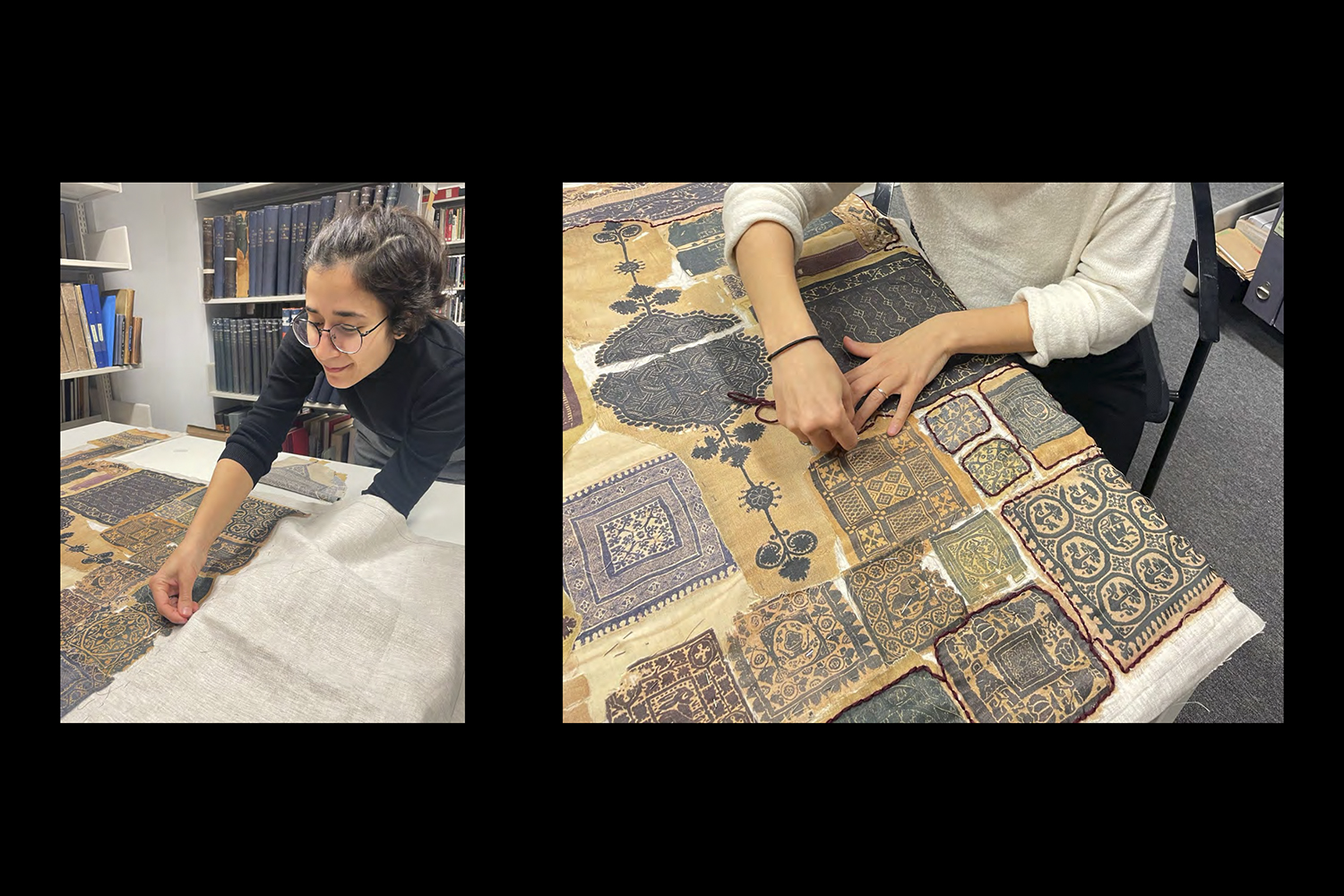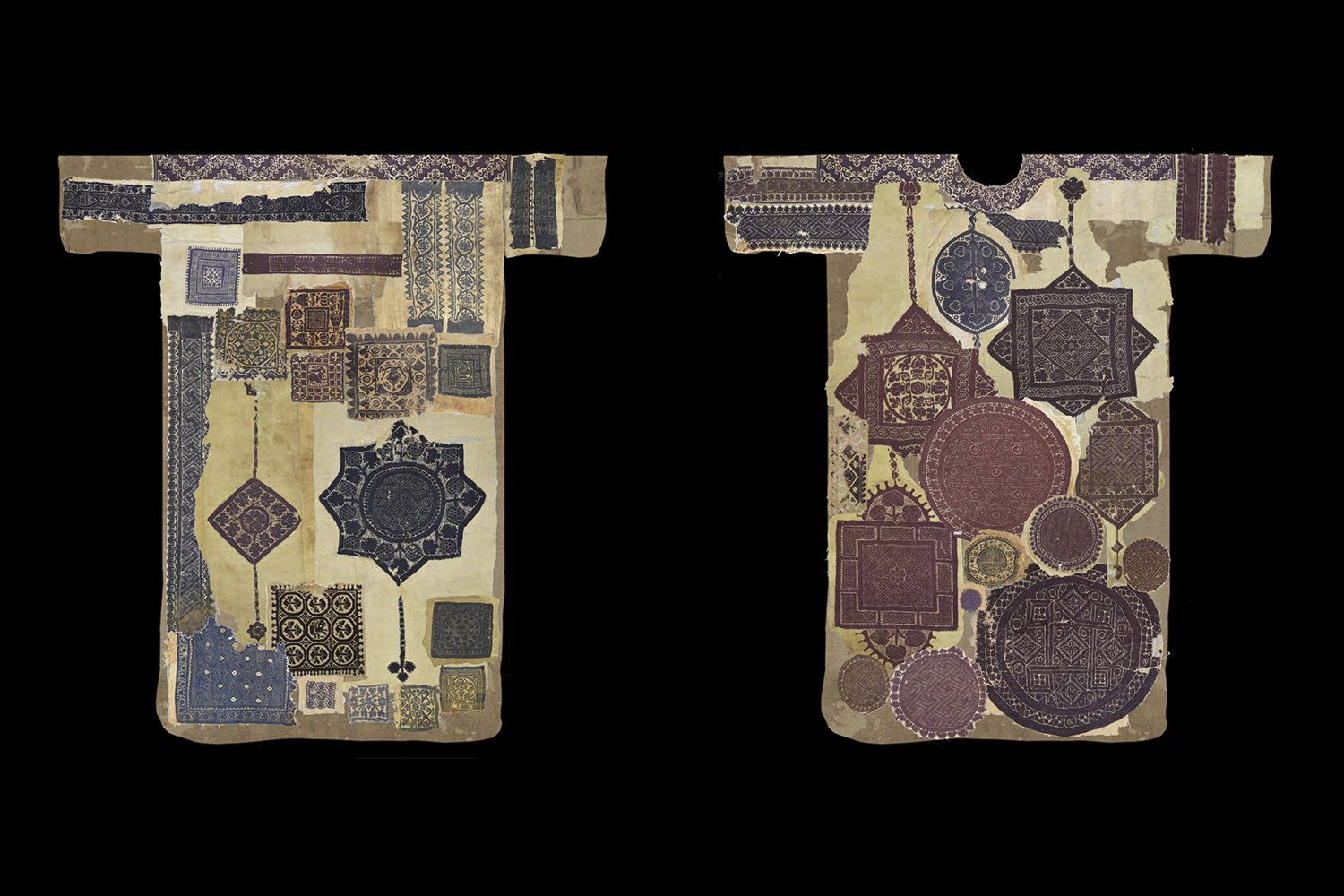Sara Sallam
Works
Books & Prints
Information
< < scroll horizontally > >
Suturing Wounds
2024 - OngoingIntroduction
Suturing Wounds responds to the ancient Egyptian textile collections held in art and design worldwide. Most of these textiles are archaeological finds from Byzantine cemeteries excavated in the 19th century. Their fragmentary state bears witness to the large-scale practice of tearing garments worn by or buried with the dead to fuel the growing demands of museums building their collections during the Victorian era.
Through this work, I aim to counteract the violence inflicted upon these textiles and the bodies stripped of the wrapped woven fabrics meant to protect them. The small, torn pieces adorned with intricate motifs and patterns were believed to entrap evil from entering the wearers’ bodies. By reprinting the photographs of these textiles onto fabric, I first liberate them as tangible facsimiles, allowing them to be touched again. I then suture them together as an act of defiance and rebellion against their fragmentation. In doing so, the lengthy stitching labor becomes a practice of caring for, healing, and suturing wounds. The resulting assemblage, which takes the form of a tunic, stands as a symbolic memorial headstone, honoring those unknown ancestors of mine whose graves were violated.
The first garment sutures textile fragments excavated from Akhmim cemeteries, now part of the Victoria and Albert Museum’s collection. Wearing it before the museum’s storage facility, where the textiles are confined, becomes an embodied protest, a reclaiming of solidarity with the silenced fabrics admired solely for their aesthetic qualities.
Making of the first tunic at the V&A
< < scroll horizontally > >





